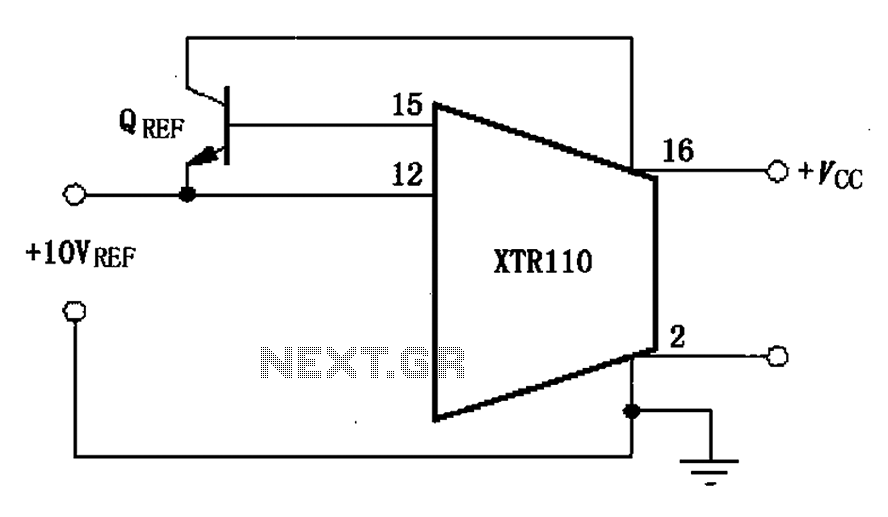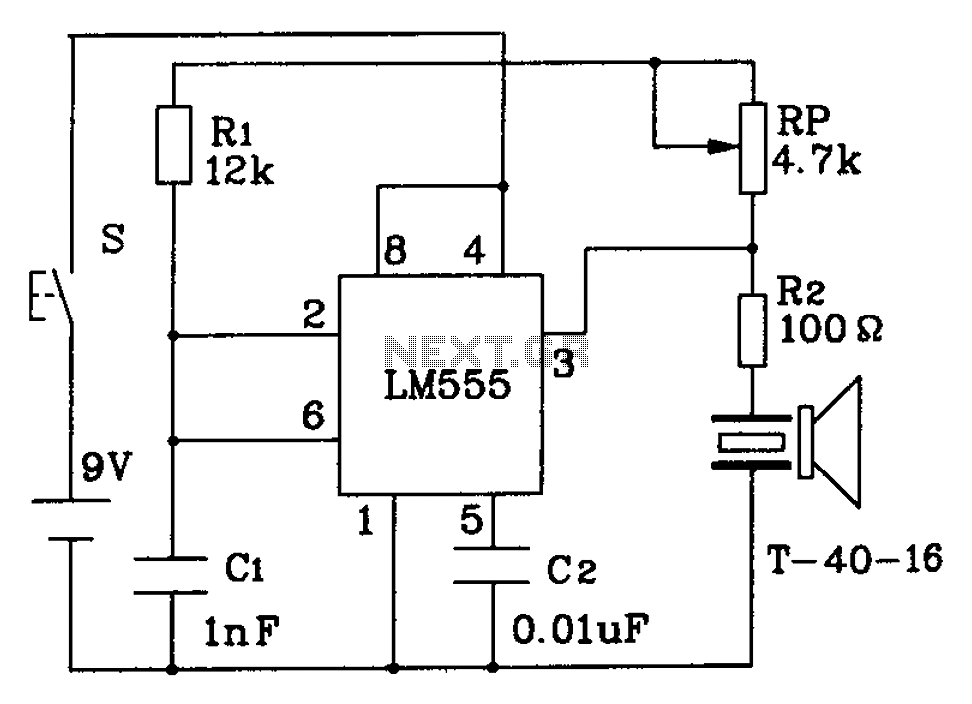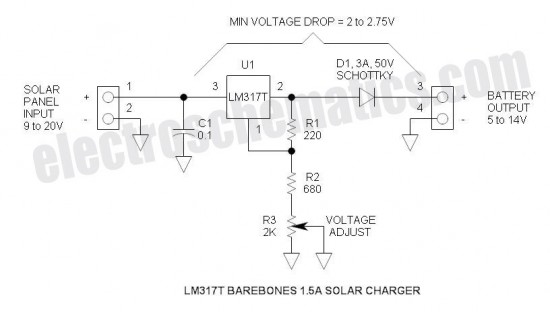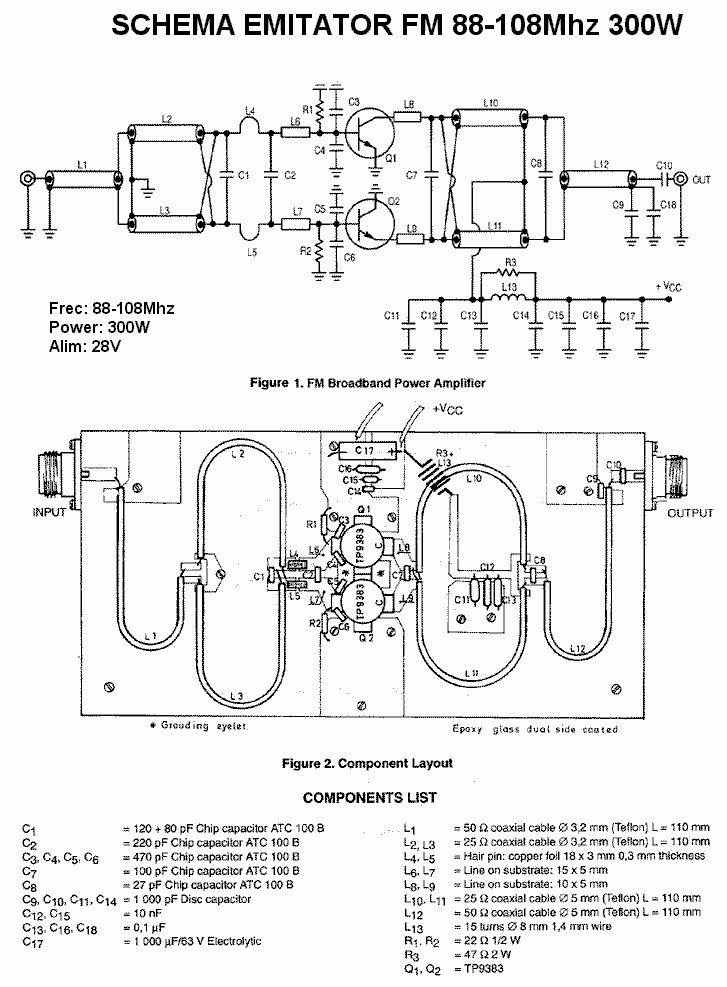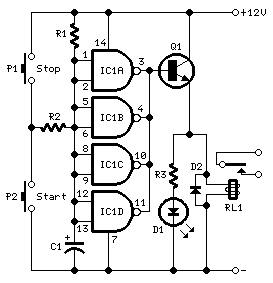
DC Motor-Driver H-Bridge Circuit
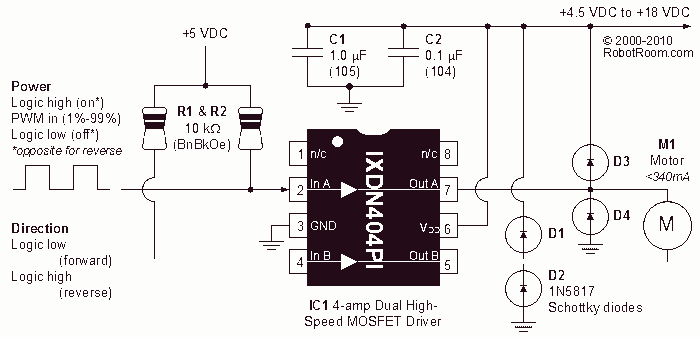
A very popular circuit for driving DC motors (ordinary or gearhead) is called an H-bridge. It's called that because it looks like the capital letter 'H' on classic schematics. The great ability of an H-bridge circuit is that the motor can be driven forward or backward at any speed, optionally using a completely independent power source.
The H-bridge circuit is a crucial component in motor control applications, allowing for bidirectional control of DC motors. It consists of four switches, typically implemented using transistors or MOSFETs, arranged in an 'H' configuration. The two vertical legs of the 'H' are connected to the power supply and the motor, while the horizontal legs are the switches that control the flow of current through the motor.
To drive the motor in one direction, two switches are closed (turned on) while the other two switches are open (turned off). This allows current to flow through the motor in one direction. Reversing the motor's direction is achieved by turning off the first pair of switches and turning on the other pair, which reverses the current flow through the motor.
The speed of the motor can be controlled through Pulse Width Modulation (PWM) techniques. By rapidly switching the power to the motor on and off, the average voltage and current supplied to the motor can be adjusted, thus controlling its speed. The H-bridge can also be designed to handle various power ratings depending on the application, making it versatile for use in robotics, automotive systems, and other applications requiring motor control.
In addition to the basic H-bridge configuration, various protection features can be integrated into the design, such as flyback diodes to prevent back EMF from damaging the switches, current sensing to monitor motor load, and thermal protection to prevent overheating. These enhancements ensure reliable operation and longevity of the circuit in demanding environments.
Overall, the H-bridge circuit is an essential building block for effective DC motor control, providing flexibility in operation and ease of integration into larger systems.A very popular circuit for driving DC motors (ordinary or gearhead) is called an H-bridge. It`s called that because it looks like the capital letter `H` on classic schematics. The great ability of an H-bridge circuit is that the motor can be driven forward or backward at any speed, optionally using a completely independent power source. 🔗 External reference
The H-bridge circuit is a crucial component in motor control applications, allowing for bidirectional control of DC motors. It consists of four switches, typically implemented using transistors or MOSFETs, arranged in an 'H' configuration. The two vertical legs of the 'H' are connected to the power supply and the motor, while the horizontal legs are the switches that control the flow of current through the motor.
To drive the motor in one direction, two switches are closed (turned on) while the other two switches are open (turned off). This allows current to flow through the motor in one direction. Reversing the motor's direction is achieved by turning off the first pair of switches and turning on the other pair, which reverses the current flow through the motor.
The speed of the motor can be controlled through Pulse Width Modulation (PWM) techniques. By rapidly switching the power to the motor on and off, the average voltage and current supplied to the motor can be adjusted, thus controlling its speed. The H-bridge can also be designed to handle various power ratings depending on the application, making it versatile for use in robotics, automotive systems, and other applications requiring motor control.
In addition to the basic H-bridge configuration, various protection features can be integrated into the design, such as flyback diodes to prevent back EMF from damaging the switches, current sensing to monitor motor load, and thermal protection to prevent overheating. These enhancements ensure reliable operation and longevity of the circuit in demanding environments.
Overall, the H-bridge circuit is an essential building block for effective DC motor control, providing flexibility in operation and ease of integration into larger systems.A very popular circuit for driving DC motors (ordinary or gearhead) is called an H-bridge. It`s called that because it looks like the capital letter `H` on classic schematics. The great ability of an H-bridge circuit is that the motor can be driven forward or backward at any speed, optionally using a completely independent power source. 🔗 External reference
